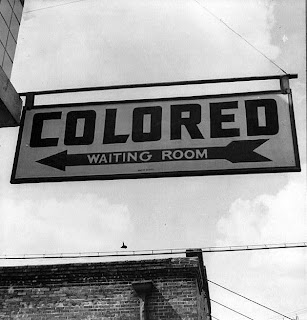Christmas: Its Origin and Associations: Together with Its Historical Events and Festive Celebrations During Nineteen Centuries: Depicting, by Pen and Pencil, Memorable Celebrations, Stately Meetings of Early Kings, Remarkable Event, Romantic Episodes, Brave Deeds, Picturesque Customs, Time ...
By William Francis Dawson, Published by E. Stock, 1902. Original from the University of California, Digitized Oct 5, 2007
A journalist who has been amongst the negroes in the Southern States of America thus describes their Christmas festivities :—
" Christmas in the South of the United States is a time- honoured holiday season, as ancient as the settlement of the Cavalier colonies themselves. We may imagine it to have been imported from ' merrie England ' by the large-hearted Papist, Lord Baltimore, into Maryland, and by that chivalric group of Virginian colonists, of whom the central historical figure is the famous Captain John Smith, of Pocahontas memory.
Christmas, with many of the Old England customs imported to the new soil, derived new spirit and enjoyment from customs which had their origin in the Colonies themselves. Above all was it the gala season— the period to be looked forward to and revelled in—of the negroes. Slavery, with all its horrors and wickedness, had at least some genial features ; and the latitude which the masters gave to the slaves at Christmas time, the freedom with which the blacks were wont to concentrate a year's enjoyment into the Christmas week, was one of these. In Washington, where until the war slavery existed in a mild and more civilised form, the negro celebrations of Christmas were the peculiar and amusing feature of the season.
And many of these customs, which grew up amid slavery, have survived that institution. The Washington negroes, free, have pretty m1tch the same zest for their time-honoured amusements which they had when under the dominion of the oligarchy. Christmas is still their great gala and occasion for merry-making, and the sable creatures thoroughly understand the art of having a good time, being superior, at least in this respect, to many a blase Prince and Court noble distracted with ennui. Those who have seen the 1Minstrels' may derive some idea, though but a slight one, of the negro pastimes and peculiarities. They are, above all, a social, enthusiastic, whole-souled race ; they have their own ideas of rank and social caste, and they have a humour which is homely, but thoroughly genial, and quite the monopoly of their race.
They insist on the whole of Christmas week for a holiday. ' Missus' must manage how she can. To insist on chaining them down in the kitchen during that halcyon time would stir up blank rebellion. Dancing and music are their favourite Christmas recreations ; they manage both with a will. In the city suburbs there are many modest little frame-houses inhabited by the blacks ; now and then a homely inn kept by a duskv landlord. Here in Christmas time you will witness many jolly and infectiously pleasant scenes. There is a ' sound of revelry by night.' You are free to enter, and observe near by the countless gyrations of the negro cotillon, the intricate and deftly executed jig, the ryde melody of banjos and ' cornstalk fiddles.'
They are always proud to have 'de white folks ' for spectators and applauders, and will give you the best seat, and will outdo themselves in their anxiety to show off at their best before you. You will be astonished to observe the scrupulous neatness of the men, the gaudy and ostentatious habiliments of ' de ladies.' The negroes have an intense ambition to imitate the upper classes of white society. They will study the apparel of a well-dressed gentleman, and squander their money on ' swallow-tail' coats, high dickeys, white neckties, and the most elaborate arts of their dusky barbers. The women are even more imitative of their mistresses. Ribbons, laces, and silks adorn them, on festive occasions, of the most painfully vivid colours, and fashioned in all the extravagance of negro taste. Not less anxious are they to imitate the manners of aristocracy. The excessive chivalry and overwhelming politeness of the men towards the women is amazing.
They make gallant speeches in which they insert as many of the longest and most learned words as they can master, picked up at random, and not always peculiarly adapted to the use made of them. Their excitement in the dance, and at the sound of music, grows as intense as does their furor in a Methodist revival meeting. They have, too, dances and music peculiar to themselves—jigs and country dances which seem to have no method, yet which are perfectly adapted to and rhythmic with the inspiring abrupt thud of the banjo and the bones. As they dance, they shout and sing, slap their hands and knees, and lose themselves in the enthusiasm of the moment. The negroes look forward to Christmas not less as the season for present-giving than that of frolicking and jollity.
Early in the morning they hasten upstairs, and catch ' massa ' and ' missus' and 1 de chillun' with a respectful hut eager ' Merry Christmas,' and are sure to get in return a new coat or pair of boots, a gingham dress, or ear-rings more showy than expensive. They have saved up, too, a pittance from their wages, to expend in a souvenir for ' Dinah ' or ' Pompey,' the never-to-be-forgotten belle or sweetheart."




































